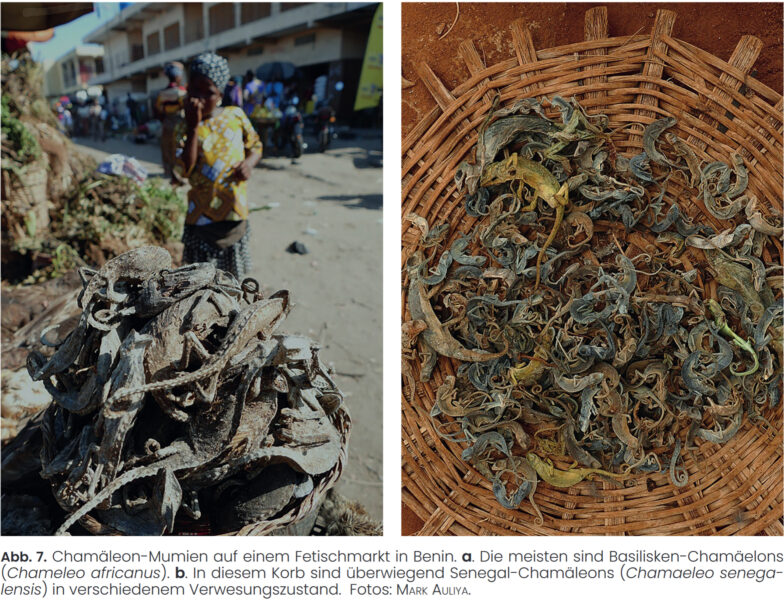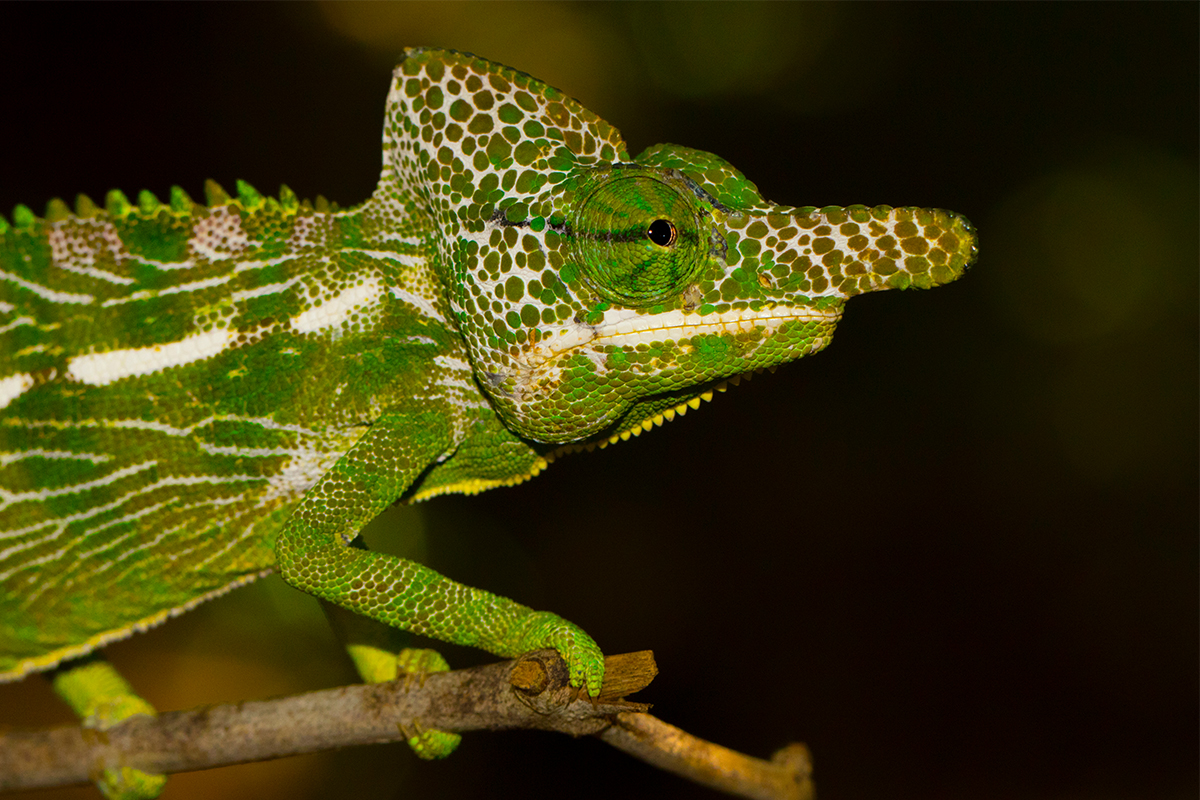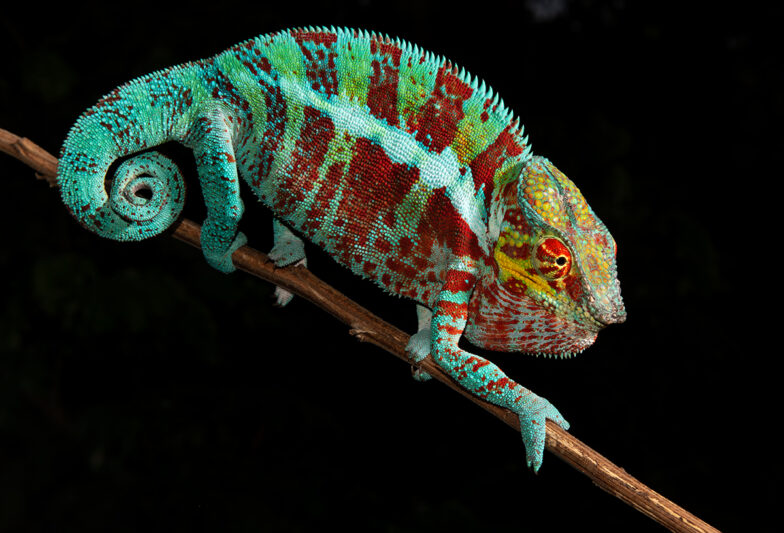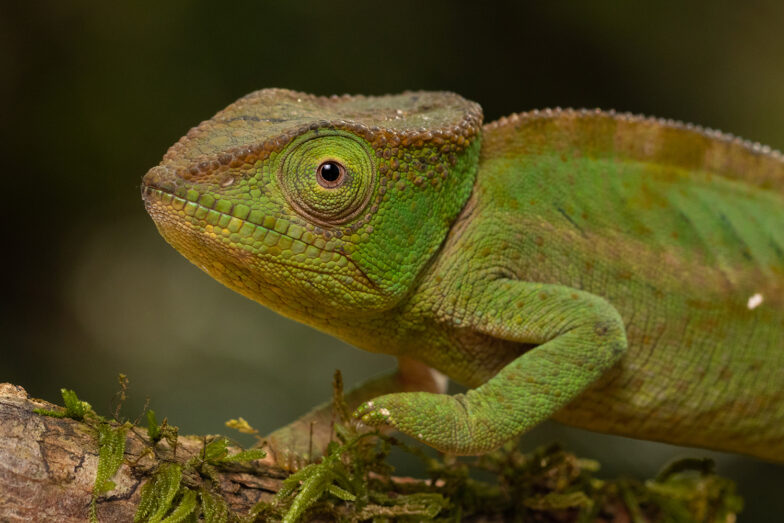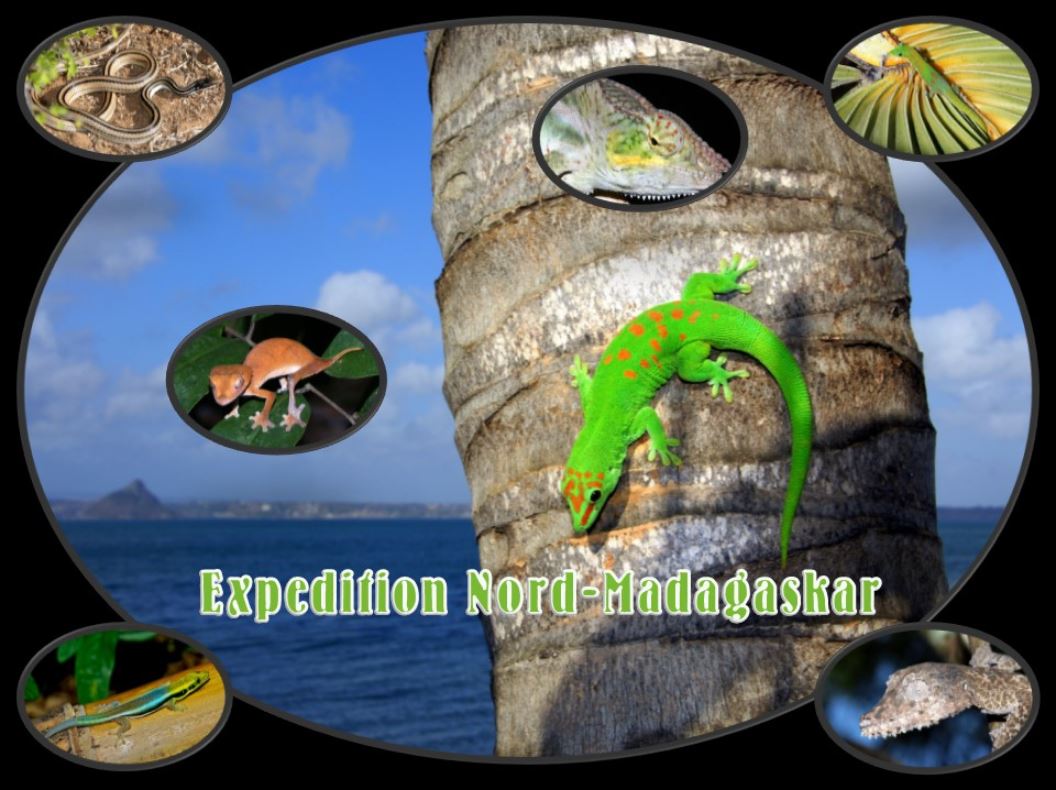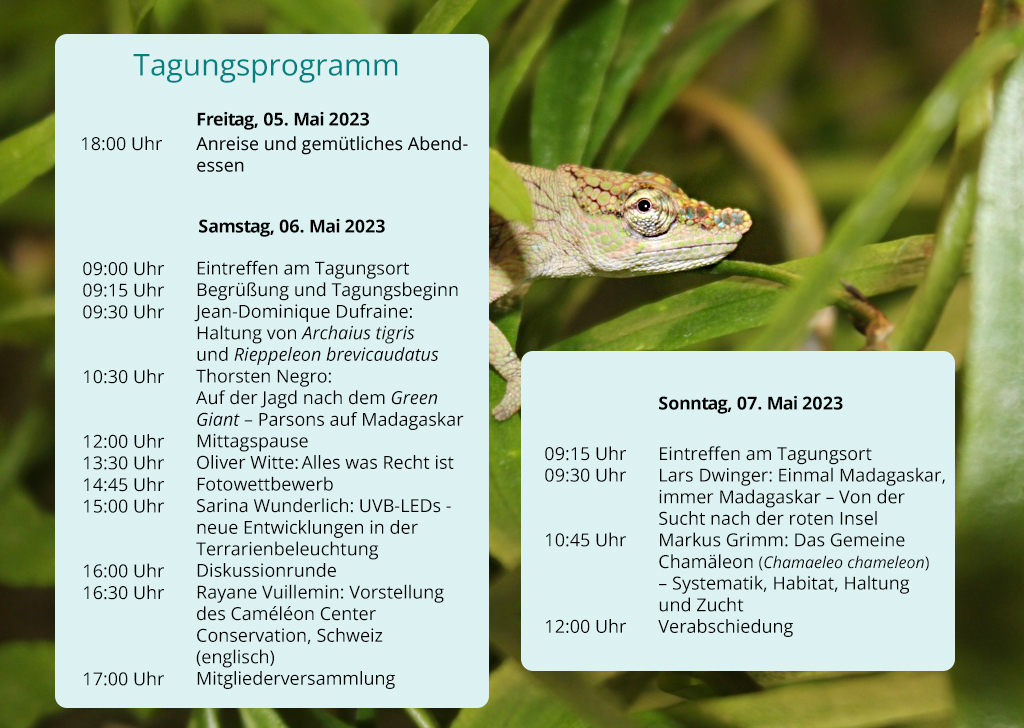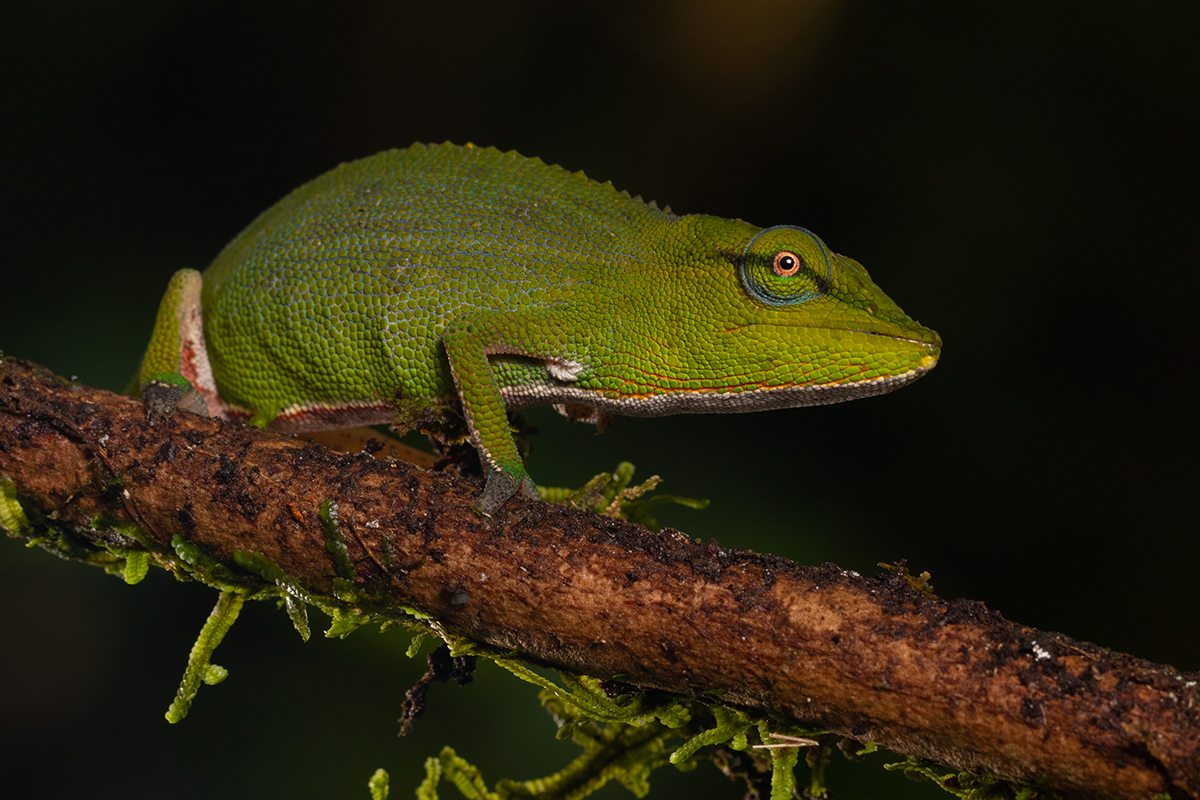International scientists have intensively studied the different altitudes of the Amber Mountain and the amphibians and reptiles found there. The Amber Mountain (French Montagne d’Ambre) is a former volcanic massif in northern Madagascar. The mountain, which is up to 1475 m high, is mainly covered by rainforest, which belongs to the national park of the same name. To the north of the mountain is a dry forest that belongs to the Forêt d’Ambre Special Reserve. The north-western flank of the mountain has not yet been protected.
In the present work, amphibians and reptiles were observed and sampled over 12 km between 700 and 1470 metres altitude. The western slope of the Montagne d’Ambre at altitudes between 770 and 1290 m was also included in the study for the first time. In addition, animals were sampled in the Forêt d’Ambre from 470 m altitude. All animals found were measured. Cheek swabs, scales as well as live animals that had been euthanised were collected and genetically analysed. A total of 2631 observations of 34 species of amphibians and 48 species of reptiles were made. As expected, different animals occurred at different altitudes. The species richness of the Montagne d’Ambre was greatest at around 1000 m a.s.l. with 41 different species. Above 1100 m, about one third of the species found were locally endemic.
Two genetic clusters of the earth chameleon Brookesia tuberculata have been identified. Group 1 lives on the eastern flank of the Montagne d’Ambre at altitudes of 887 to 1170 m, group 2 at 1260 to 1455 m on the eastern flank and at 956 to 1150 m on the western slope of the Montagne d’Ambre. Group 1 showed a particularly high number of mitochondrial haplotypes, while group 2 had only one haplotype. The scientists assume that due to their small body size and high site fidelity, the species tends to form isolated groups rather than tree-inhabiting chameleons, which can overcome natural barriers more easily and thus move within a much larger environmental radius.
In Calumma linotum, the genetic differences between three groups at different altitudes were rather small. The measurement data of various body dimensions also showed no clear trend for this species at the different altitudes. Although Calumma linotum appeared to be slightly smaller at lower altitudes, this could have been due to subadult individuals misidentified as females. For Calumma amber and Calumma ambreense, body size decreased the higher the chameleons were found in the Montagne d’Ambre. This may be related to the cooler temperatures at higher altitudes, which contribute to slower growth. But it could also be that more younger animals were simply measured.
The study reveals interesting adaptations of different chameleon species to the altitudinal differences of the Montagne d’Ambre. It is possible that these are already the first indications of an early stage of speciation. The work also illustrates how important the different altitudinal levels are for species diversity.
Repeated divergence of amphibians and reptiles across an elevational gradient in northern Madagascar
Mark D. Scherz, Robin Schmidt, Jason L. Brown, Julian Glos, Ella Z. Lattenkamp, Zafimahery Rakotomalala, Andolalao Rakotoarison, Ricky T. Rakotonindrina, Onja Randriamalala, Achille P. Raselimanana, Safidy M. Rasolonjatovo, Fanomezana M. Ratsoavina, Jary H. Razafindraibe, Frank Glaw, Miguel Vences
Ecology and Evolution 13 (3)
DOI: 10.1002/ece3.9914

